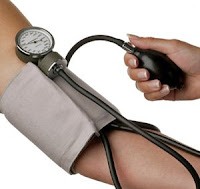Autistic disorder is a severe, pervasive developmental disorder marked by unresponsiveness to social contact, gross deficits in intelligence and language development, ritualistic and compulsive behaviors, restricted capacity for developmentally appropriate activities and interests, Autistic disorder is characterized by a withdrawal of the child into the self and into a fantasy world of his or her own creation. Activities and interests are restricted and may be considered somewhat bizarre. The disorder is rare, but occurs 4 to 5 times more often in males than in females. Onset of symptoms is prior to age 3. The course is chronic and often persists into adulthood.
Causes for Autistic disorder
The causes of autistic disorder remain unclear but are thought to include psychological, physiologic, and sociologic factors. Previously, it was thought that most parents of autistic children were intelligent, educated people of high socioeconomic status; recent studies suggest that this may not be true. The parents of an autistic child may appear distant and unaffectionate toward the child. However, because autistic children are clearly different from birth, and because they are unresponsive or respond with rigid, screaming resistance to touch and attention, parental remoteness may be merely a frustrated, helpless reaction to this disorder, not its cause.
Some theorists consider autistic disorder related to:- Genetics. An increased risk of autistic disorder exists among siblings of individuals with the disorder (APA, 2000). Studies with both monozygotic and dizygotic twins have also provided evidence of a genetic involvement.
- Neurological Factors. Abnormalities in brain structures or functions have been correlated with autistic disorder (National Institute of Mental Health [NIMH], 2002). Certain developmental problems, such as postnatal neurological infections, congenital rubella, phenylketonuria, and fragile X syndrome, also have been implicated.
Complications for Autistic disorder
- Autistic disorder may be complicated by epileptic seizures
- Depression is common in adolescence and early adulthood
- During periods of stress, catatonic phenomena, such as excitement or posturing, or an undifferentiated psychotic state with delusions and hallucinations may occur.
Nursing Assessment nursing care plans for Autistic disorder
Primary characteristic of autistic disorder is unresponsiveness to people. Patient with this disorder won't cuddle, avoid eye contact and facial expression, and are indifferent to affection and physical contact. Parents may report that the child becomes rigid or flaccid when held, cries when touched, and shows little or no interest in human contact. As the patient grows older, his smiling response is delayed or absent. He doesn't lift his arms in anticipation of being picked up or form an attachment to a specific caregiver.
- Failure to form interpersonal relationships.
- Impairment in communication verbal and nonverbal, nonverbal expressions may be inappropriate or absent.
- Bizarre responses to the environment.
- Extreme fascination for objects that move.
- Unreasonable insistence on following routines in precise detail.
- Marked distress over changes in trivial aspects of environment.
- Stereotyped body movements.
Common Nursing Diagnoses Found On Nursing Care Plans For Autistic Disorder
- Risk for self mutilation
- Impaired social interaction
- Impaired verbal communication
- Disturbed personal identity
- Anxiety
- Compromised family coping
- Delayed growth and development
- Dressing or grooming self-care deficit
- Interrupted family processes
- Risk for injury
- Risk for self-directed violence
- Social isolation
Nursing interventions, Key outcomes nursing care plans for Autistic disorder





